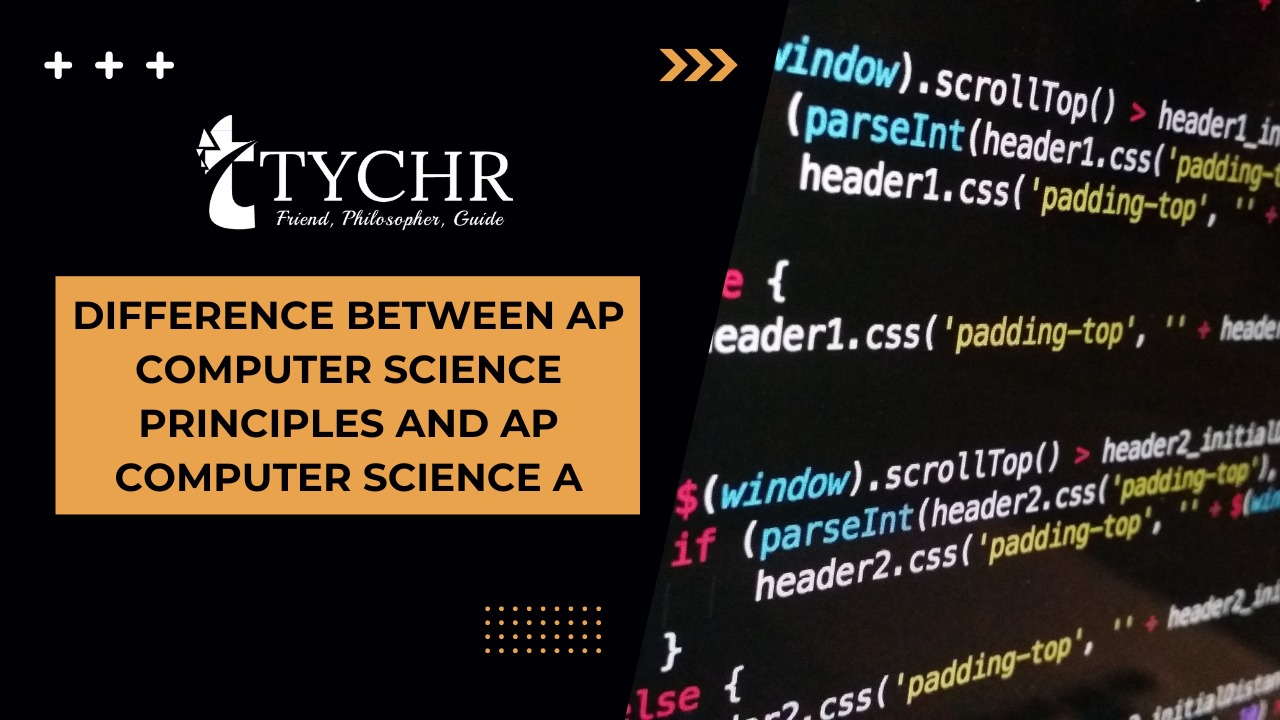Table of Contents [hide]
Advanced Placement (AP) courses are designed to provide high school students with college-level coursework in various subjects, including computer science. AP Computer Science Principles (CSP) and AP Computer Science A (CSA) are two of the most popular AP courses in computer science. However, many students and parents struggle to understand the difference between these two courses. In this article, we will provide a detailed comparison of AP Computer Science Principles and AP Computer Science A.
AP Computer Science Principles
AP Computer Science Principles is a course designed to introduce students to the fundamentals of computer science. The course covers a broad range of topics, including programming, algorithms, data analysis, and the societal impacts of computing. The course is intended to be accessible to students with no prior programming experience.
One of the unique features of AP Computer Science Principles is that it is designed to be interdisciplinary. The course encourages students to think about the intersection of computer science with other fields, such as art, music, and social science. Students are also introduced to the concept of computational thinking, which is a problem-solving method used by computer scientists to solve complex problems.
Exam Structure
The AP Computer Science Principles exam consists of two parts. The first part is a multiple-choice exam, which tests students’ knowledge of the course material. The second part is a performance task, which requires students to complete a project that demonstrates their ability to apply the concepts learned in the course.
Multiple-choice section:
The multiple-choice section consists of 74 questions and is 1 hour and 30 minutes long. The questions are designed to test students’ understanding of the following four computational thinking practices and seven big ideas:
Performance task:
The performance task requires students to complete a project that demonstrates their ability to apply the concepts learned in the course. Students are given a scenario or problem to solve and are asked to design, implement, and test a program to solve the problem. The performance task is divided into two parts: the Explore task and the Create task.
Explore task:
The Explore task requires students to investigate a computing innovation and its impact on society. Students are asked to write a research paper and create a visual representation, such as an infographic or video, that explains the innovation and its impact.
Create task:
The Create task requires students to develop a program that solves a real-world problem. Students are given a set of requirements and are asked to design, implement, and test a program that meets those requirements. Students are also required to submit a video that explains their program and how it solves the problem.
The performance task is 2 hours long and is worth 40% of the student’s overall AP exam score. The Explore task is worth 20% of the performance task score, and the Create task is worth 80% of the performance task score.
To summarise, the AP Computer Science Principles exam consists of a multiple-choice section and a performance task that requires students to demonstrate their understanding of computational thinking practices and big ideas and apply them to real-world problems. The exam is designed to test students’ understanding of a broad range of computer science topics and their ability to apply that knowledge to solve problems.
AP Computer Science A
AP Computer Science A is a course designed to teach students advanced programming concepts. The course focuses on teaching students how to write programs in the Java programming language. Students are introduced to topics such as object-oriented programming, data structures, and algorithms.
AP Computer Science A is intended for students with prior programming experience. The course assumes that students have taken a course in introductory programming and have a solid understanding of programming concepts such as variables, loops, and conditional statements.
Exam structure
The AP Computer Science A exam consists of two parts. The first part is a multiple-choice exam, which tests students’ knowledge of the course material. The second part is a free-response exam, which requires students to write programs in the Java programming language.
Multiple-choice section:
The multiple-choice section consists of 40 questions and is 1 hour and 30 minutes long. The questions are designed to test students’ understanding of the following seven topics:
- Primitive Data Types and Variables
- Operators and Expressions
- Control Structures
- Classes and Objects
- Inheritance
- Polymorphism and Interfaces
- Data Structures and Algorithms
Free-response section:
The free-response section consists of four questions and is 1 hour and 30 minutes long. The questions are designed to test students’ ability to write, analyze, and debug programs using the Java programming language. The free-response section is divided into two parts: the first two questions are worth 40% of the overall exam score, and the last two questions are worth 60% of the overall exam score.
The four questions on the free-response section cover the following topics:
- Writing methods and classes: Students are asked to write methods or classes that implement a specific functionality.
- Analyzing and debugging code: Students are given a code snippet and are asked to identify and fix errors or to explain the behavior of the code.
- Understanding and modifying existing code: Students are given an existing program and are asked to modify it to implement a specific functionality.
- Writing programs from scratch: Students are given a problem and are asked to design, implement, and test a program that solves the problem.
The free-response section tests students’ ability to write code that is correct, efficient, and effective. Students are expected to demonstrate an understanding of the Java programming language, as well as the ability to apply programming concepts and problem-solving skills to real-world problems.
In summary, the AP Computer Science A exam consists of a multiple-choice section and a free-response section that tests students’ understanding of programming concepts, as well as their ability to write, analyze, and modify code in the Java programming language. The exam is designed to test students’ ability to apply their knowledge of programming to solve real-world problems and is a rigorous test of students’ proficiency in computer science.

Differences between AP Computer Science Principles and AP Computer Science A
Course content
The primary difference between AP Computer Science Principles and AP Computer Science A is the course content. AP Computer Science Principles covers a broad range of topics, including programming, algorithms, data analysis, and the societal impacts of computing. AP Computer Science A, on the other hand, focuses primarily on teaching students advanced programming concepts, such as object-oriented programming, data structures, and algorithms.
Prerequisites
AP Computer Science Principles does not have any prerequisites. The course is designed to be accessible to students with no prior programming experience. AP Computer Science A, on the other hand, assumes that students have taken a course in introductory programming and have a solid understanding of programming concepts such as variables, loops, and conditional statements.
Programming language
AP Computer Science Principles does not require students to learn a specific programming language. Instead, students are encouraged to use a variety of programming languages and tools to complete their projects. AP Computer Science A, on the other hand, focuses exclusively on teaching students how to write programs in the Java programming language.
Exam format
The format of the AP Computer Science Principles and AP Computer Science A exams is different. The AP Computer Science Principles exam consists of two parts: a multiple-choice exam and a performance task. The AP Computer Science A exam also consists of two parts: a multiple-choice exam and a free-response exam.
Emphasis on computational thinking
One of the unique features of AP Computer Science Principles is the emphasis on computational thinking. The course teaches students how to approach problems like a computer scientist, breaking them down into smaller, more manageable pieces and developing algorithms to solve them. While computational thinking is also a fundamental aspect of AP Computer Science A, it is not as heavily emphasized as it is in AP Computer Science Principles.
Interdisciplinary approach
Another unique feature of AP Computer Science Principles is its interdisciplinary approach. The course encourages students to explore the intersection of computer science with other fields, such as art, music, and social science. AP Computer Science A, on the other hand, is focused solely on teaching programming concepts and does not have an interdisciplinary component.
Career paths
AP Computer Science Principles and AP Computer Science A can lead to different career paths. AP Computer Science Principles provides a broad introduction to computer science and can be a good fit for students who are interested in exploring the field but may not be certain if they want to pursue a career in computer science. AP Computer Science A is more focused on programming and can be a good fit for students who are considering a career in software development or computer engineering.
AP Computer Science Principles and AP Computer Science A are both excellent courses for students who are interested in computer science. While they cover different topics and have different prerequisites, they are both designed to provide students with college-level coursework in computer science. Whether a student chooses to take AP Computer Science Principles or AP Computer Science A will depend on their prior experience with programming, their interests, and their career goals. Ultimately, both courses provide valuable skills and knowledge that can help prepare students for college and beyond.











